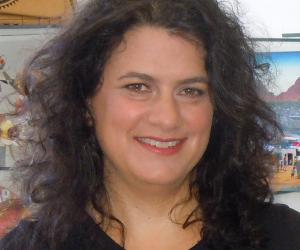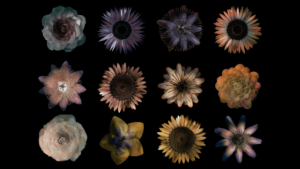First Published in
Craft can be craft can be craft. Yet stir a little design into the hand-made clay pot, and the results can be astonishing. The challenge, of course, when working with South Africa's local crafters who produce items in really basic conditions, is managing to create a high-end product - without machined engineering - that retains the soul of a handcrafted piece yet combines it with incredible design.
When you throw someone like Stephen Burks of Readymade Projects at the challenge, what you get is not only that missing design factor, but surprising, delightful products that take the concept of craft and stretch it into a new realm. An urban New Yorker, Stephen is a multidisciplinary designer who has worked for the likes of Cappellini and exciting brands such as Triple 5 Soul. He was brought out to Cape Town earlier this year thanks to the efforts of the Cape Craft & Design Institute (CCDI), Aid to Artisans (ATA) and the W K Kellogg Foundation. He spent two weeks working with seven craft enterprises and four young product development trainees. It was anticipated that this would be just a run-of-the-mill product development programme. Not so, as it turned out.
Both the fact that Stephen usually generates designs that are then made up to prototype by manufacturers and that he had never worked with a group of crafters before may at first have seemed like real impediments to the process. In the end, however, they became distinct advantages.
Unhampered by any preconceptions, Stephen was able to be adventurous with the application of materials. His input resulted in totally unique products, with three of the crafters radically changing their working methods and raw materials. Each of the seven producers ended up with the opportunity to use these new products to carve out a fresh niche in the market.
These end products have an element of surprise, of the unexpected. Take, for example, the mock-mosaic vases that Stephen created in conjunction with crafter Thabisa Marawu. Unbreakable, completely squishable, and thoroughly lightweight, these vases are made using silicone rather than tiles.
Erica Elk of the CCDi comments: "For the trainees and the craft producers he was wonderful. He made them work really hard. They were having to turn around his suggestions in a couple of days, and they hadt Musarurwa moved from making bead and wire chameleons to an extraordinarily beautiful wire table that is flying out of retail stores; Vuyo Nyathi moved from recycled can caps to an outrageous lampshade using hundreds of cold drink cans that give off a wonderfully warm and soothing light."
The producers could not always see where Stephen was going and didn't quite believe in the process … in the end though they fell completely in love with the products they were able to make. And the response from the market has definitely helped!"
The whole point of Stephen's visit was to stimulate the development of emerging craft entrepreneurs who had good technical skill, a production base, strong entrepreneurial drive and were ready for support to get them into national and international markets. As Erica explains: "We've spent the past 4 years working intensively with crafters in the Western Cape and have a good understanding of what it takes for craft enterprises to engage in national and international trade. ATA has similar experience around the world. What we both know is that the product is not the most important factor for success - there's a whole combination of skills and talent that is required to successfully and consistently trade at this level. We were determined that the process needed to include sustained intervention and support for the enterprises beyond the product development and show cycle to ensure that we were helping them onto a growth path."
The four product development trainees who worked with Stephen during his visit then continued the project by working on the prototypes, costing and pricing and getting samples ready for shipping. The newly created range was shown at the New York Gift Show and at SARCDA in Johannesburg in August. They were very well received at both shows, generating media interest in both countries and a growing local order book of R45 000. Because of this encouraging outcome, a selection of the most promising products will be taken to NYIGF in January 2006, and Ambiente, Germany in February 2006.
Critics of a project such as this might argue that we in South Africa are suffering from an insecurity complex by seeking input and direction from an international and not a local designer. But the very point is to benefit from the experience and market insights of an international player, in order to create products that can compete on an international level in the wider, global market.
"The trick in programmes like these," Erica asserts, "is to tap into the global market intelligence and experience of the international designer - as well as his buyers - while using this to both develop local design capacity and products that don't dilute our cultural heritage and identity… a very tall order. But based on our collective experience in the sector; the sometimes painful lessons we've learnt from initiatives like LOSA and the Woolworths/Conran range and the experience of our local designers from the Bright House to the Bat Shop… I think we are developing a better and more sustainable methodology… That's what's been exciting about this project… It's not just about Willard's beautiful table - but how Willard himself has met the challenge."
You'll be able to see Willard's gorgeous piece of furniture in the flesh at the upcoming Design Indaba Expo in February 2006, where the full CCDI/ATA range will be on display - and on sale. Between Design Indaba Expo, the CCDI and ATA it has been arranged that Stephen will head out from the Big Apple for the second round of the project in February 2006. He will present a talk exclusively for Design Indaba Expo exhibitors at the event.



















